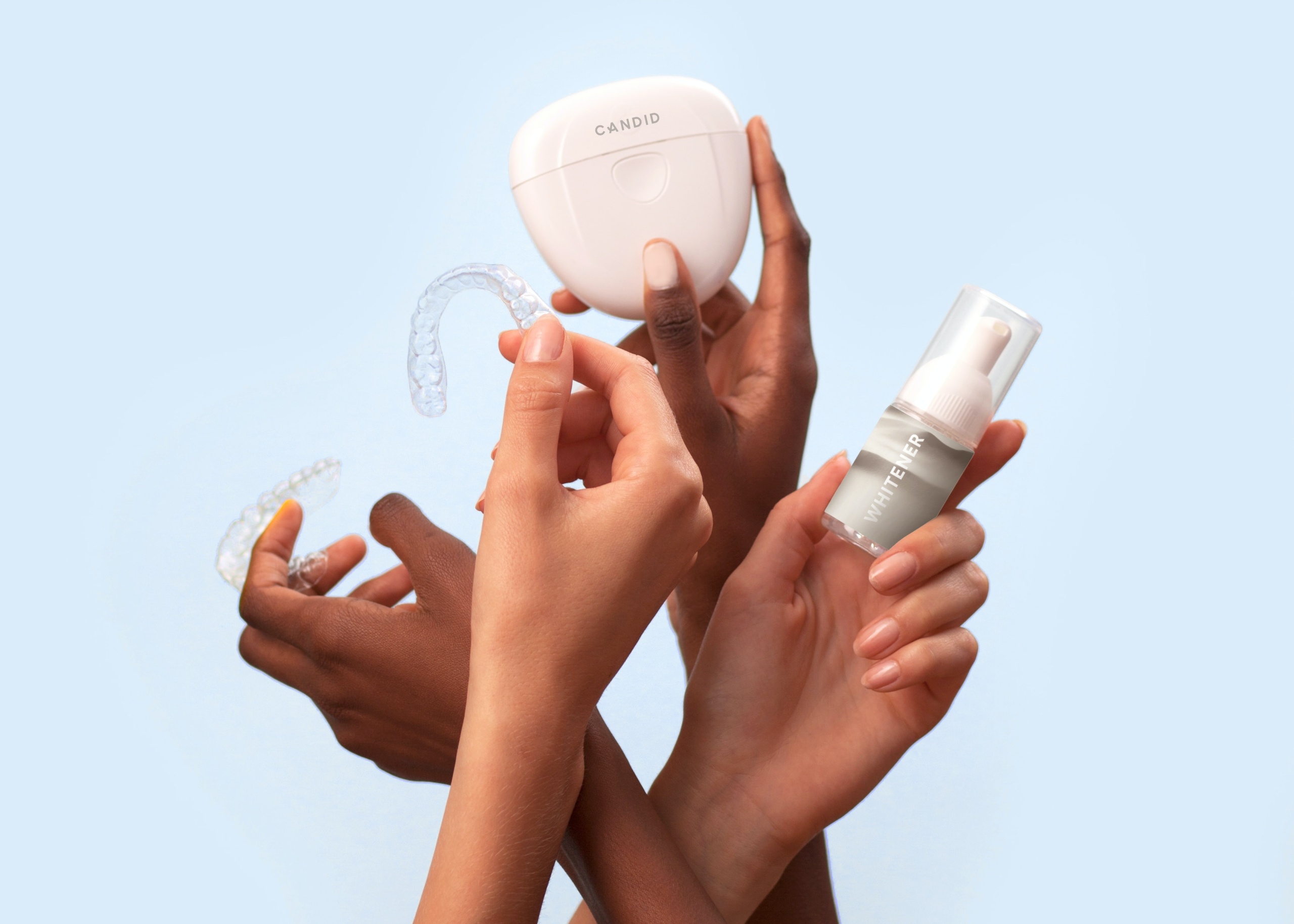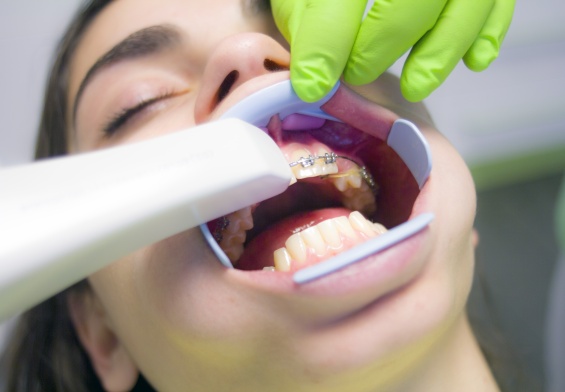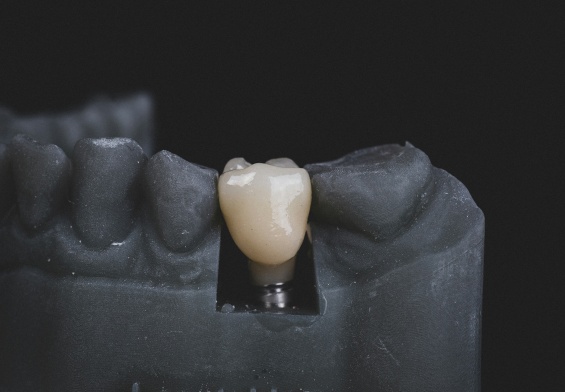In Maplewood, NJ, Invisalign’s busted onto the scene, straightening out unruly teeth without needing to rely on regular braces. Instead, they’re clear, removable aligners that work by gradually shifting teeth into the right positions.
Most people think of Invisalign as a cosmetic treatment. But, recent research shows it can also fix functional dental problems. A 2025 study in Medicina found that clear aligners can correct bites in many of the same ways as braces with enough planning and attachments.
That’s proof Invisalign in Maplewood, NJ provides more than just a visual boost. There’s clinical support behind it enhancing oral health, function, and comfort. If you’re wondering whether Invisalign is the right orthodontic option for your specific needs, you can learn more in our detailed guide on choosing Invisalign as your orthodontic treatment
Let’s examine seven common dental issues that science tells us Invisalign can address.
1. Crowded Teeth That Make Cleaning Difficult
When there’s not enough space in your jaw for all your teeth, they crowd together. They can overlap or rotate when that happens, and that makes scouring for plaque a much more arduous process. If you can’t remove as much plaque, your risk of cavities and gum disease skyrockets.
A 2019 BMC Oral Health review compared clear aligners to braces. It found that braces can control certain movements more precisely, but aligners are also effective at improving tooth alignment in less severe cases. Segmented tooth movement, an important part of treating crowded teeth, is an ideal use case for aligners.
For Maplewood patients, this means Invisalign can relieve crowding while maintaining normal brushing and flossing habits. Since aligners are removable, you can keep better oral hygiene throughout treatment. This reduces your risk of gum inflammation.
Additionally, local Invisalign providers use digital scans to show you projected results before treatment begins. This preview makes the process more predictable and helps keep you motivated.
2. Gaps Between Teeth (Diastema)
Gaps between teeth are common and can stem from numerous causes. Genetics, missing teeth, or a mismatch between jaw and tooth size all contribute to spacing issues. Food can get trapped in the void, speech can be affected, and your self-esteem might tank.
Fortunately, studies in Medicina prove that clear aligners can precisely move teeth horizontally to close gaps. This works particularly well when combined with attachments or elastics. But, it also notes that treatment planning software can overestimate movement. In those cases, the plans might need to be revised.
This finding is important for Maplewood patients. It means your dentist will plan for possible refinements and place attachments to make sure the gap closes for good. This careful approach reduces the chance of relapse.
Furthermore, closing gaps with Invisalign is less invasive than alternatives like bonding or veneers. It preserves your natural tooth structure while the clear aligners work discreetly.
3. Overbite (Deep Bite)
An overbite happens when your upper front teeth overlap your lower front teeth too much. Over time, this can cause enamel wear, gum damage, and jaw pain.
The BMC Oral Health review found that clear aligners can correct vertical bite issues through programmed tooth movements. This works especially well in less severe cases. Treatment involves repositioning upper and lower incisors and sometimes using elastics for better jaw alignment.
For Maplewood patients, this research shows that Invisalign can be a practical alternative to braces for overbite correction. But remember, aligners rely a lot on accurate treatment design and planning. If that’s not adequate, you might not see the results you’re looking for.
Some patients still benefit more from braces, which you can explore in our guide on what to expect from the top dentist in NJ for braces.
Improving your bite alignment can reduce jaw pain and balance out the way your face looks. That’s a double-whammy of benefits and a huge selling point for Maplewood cosmetic dentists to recommend Invisalign to their patients.
4. Underbite
An underbite is the opposite of an overbite. It’s what occurs when your lower teeth extend beyond your upper teeth. This makes chewing difficult and causes uneven tooth wear.
Research in Medicina shows that Invisalign can correct mild to moderate underbites through targeted tooth movements. Treatment sometimes includes elastics or other devices. Yes, we know this, but the most important part is how much your compliance as the patient impacts the final results.
For Maplewood patients, this means underbite correction with Invisalign is possible without surgery in selected cases. The key is wearing aligners as directed. This appeals especially to adults who want to avoid more invasive treatments.
Correcting an underbite does more than enhance your smile. It also prevents premature tooth wear and reduces stress on jaw joints, helping prevent future discomfort. If jaw joint pain is a concern, you may benefit from our tips on how to find the best doctor for TMJ.
5. Crossbite
A crossbite happens when some upper teeth sit inside the lower teeth when you bite down. This can cause gum recession, uneven enamel wear, and jaw strain over time.
Both the BMC Oral Health review and J Clin Med study support Invisalign’s ability to correct crossbites in certain cases. Including attachments in the treatment for better tooth control tends to improve outcomes. There’s also research backing the use of aligners for specific movements like premolar expansion.
For Maplewood patients, this means Invisalign can expand the arch or shift specific teeth out of crossbite. You want to catch this early to nip long-term enamel/gum damage in the bud.
Patients often find this treatment more comfortable than braces. Since aligners are removable, it’s easier to maintain healthy teeth and gums during correction.
6. Open Bite
An open bite occurs when your upper and lower teeth don’t meet when your mouth is closed. Common causes include thumb-sucking, tongue thrusting, or jaw growth patterns.
A 2025 study in Medicina found that Invisalign can treat open bites using specific techniques like anterior extrusion and posterior intrusion. The research emphasizes that attachments, elastics, and sometimes myofunctional therapy are needed for optimal results.
Since tongue thrust can contribute to open bite, it’s worth reviewing the common signs of tongue thrust so you can address the habit early.
The research proves it’s possible to treat even the most challenging bites without traditional braces. All you need is to include the right support in your treatment plan. Leaving an open bite untreated can lead to chewing issues, unclear speech, and an imbalanced smile.
Local providers may also work with specialists to address tongue posture issues during treatment. This helps ensure your correction lasts over time.
7. General Bite Misalignment (Malocclusion)
Malocclusion is a broad term for bite problems that create uneven forces on teeth. This can lead to headaches, premature wear, and chewing difficulties.
The BMC Oral Health review and other clinical studies confirm that Invisalign can manage many malocclusion types. Results are comparable to braces for mild to moderate cases when movements stay within predictable limits. But, severe or extreme cases are more suited to traditional braces.
For Maplewood patients, this means Invisalign can improve function and comfort while offering discreet treatment. Digital scans at each stage allow your provider to adjust the plan as needed. This keeps your bite on track for improvement.If you’re exploring your orthodontic options, you might also consider other alternatives to braces beyond Invisalign.
Correcting malocclusion also protects teeth from long-term damage. This makes it an investment in both your future oral health and appearance.
Invisalign in Maplewood, NJ FAQs
Can Invisalign fix an overbite?
Yes, studies like the 2019 BMC Oral Health review show that Invisalign can correct many mild to moderate overbites. Maplewood providers use digital planning to customize tooth movements for your specific bite. They often combine treatment with elastics for better results.
How long does Invisalign treatment take in Maplewood, NJ?
Treatment length varies based on your specific dental issue. Most cases last 12 to 18 months. The BMC Oral Health review noted that clear aligners often need shorter treatment times than braces, especially in non-extraction cases. Your local provider will give you a personalized timeline after a digital scan.
Is Invisalign as effective as braces?
In many cases, but not always. Research in Medicina 2025 shows that careful planning and proper use of attachments or elastics can help Invisalign match braces for certain bite corrections. Success depends on accurate digital planning and patient compliance, which Maplewood practices emphasize.
Can Invisalign close large gaps between teeth?
It can close many types of gaps. But, gap size and cause affect the treatment approach. The Medicina review notes that refinements are sometimes needed for complete closure. Maplewood providers plan for this possibility to ensure lasting results.
What happens if I don’t wear my Invisalign aligners as directed?
Not wearing aligners for the recommended 20–22 hours per day can slow progress or cause unpredictable tooth movement. The Medicina study identified patient compliance as a major factor in treatment success. This is why local providers stress consistent wear and offer regular check-ins.
Can Invisalign treat open bites without surgery?
Yes, often. The 2025 Medicina study found that Invisalign can correct open bites through controlled tooth movements. Success improves when combined with attachments, elastics, or myofunctional therapy. Maplewood providers often integrate these methods to improve long-term stability.
Will Invisalign affect my speech?
Most patients adjust within a few days. Because aligners are thin and custom-fit, speech changes are typically minor and temporary. Local Maplewood patients often find clear aligners far less disruptive to speech than traditional braces.
Your Smile, Your Way
Invisalign offers more than cosmetic improvement. Studies in Medicina, BMC Oral Health, and J Clin Med prove it’s an effective way to address crowding, gaps, bite issues, and more for many Maplewood, NJ patients.
Local providers use advanced digital planning to make the process precise and comfortable. If you’re ready to explore how Invisalign could help with your specific dental concerns, visit Garden State Dental Design – Invisalign in Maplewood, NJ to schedule a consultation.
Resources
Chen X, Shi Y, Yuan J, Li Y and Chen W (2023) Factors influencing the efficacy of invisalign in molar distalization and tooth movement. Front. Bioeng. Biotechnol. 11:1215169. doi: 10.3389/fbioe.2023.1215169
Ke, Y., Zhu, Y. & Zhu, M. A comparison of treatment effectiveness between clear aligner and fixed appliance therapies. BMC Oral Health 19, 24 (2019). https://doi.org/10.1186/s12903-018-0695-z
Keilig, L., Brieskorn, L., Schwarze, J., Schupp, W., Bourauel, C., & Konermann, A. (2024). Treatment Efficiency of Maxillary and Mandibular Orovestibular Tooth Expansion and Compression Movements with the Invisalign® System in Adolescents and Adults. Journal of Clinical Medicine, 13(5), 1267. https://doi.org/10.3390/jcm13051267
Olteanu ND, Romanec C, Cernei ER, Karvelas N, Nastri L, Zetu IN. Scoping Review—The Effectiveness of Clear Aligners in the Management of Anterior Open Bite in Adult Patients. Medicina. 2025; 61(6):1113. https://doi.org/10.3390/medicina61061113




